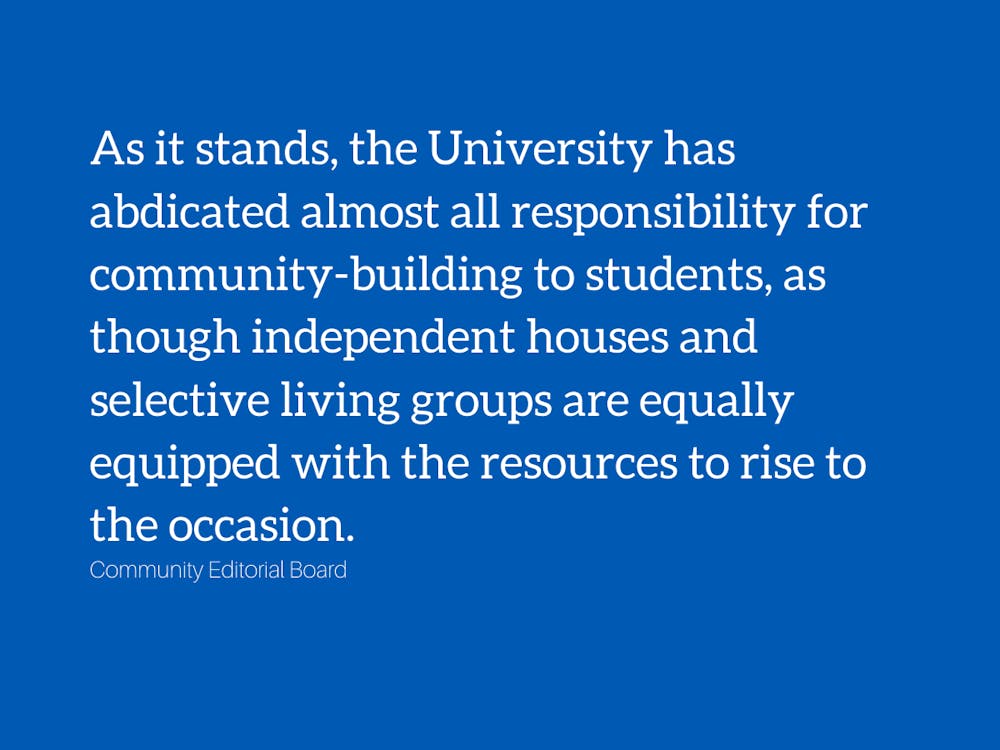Although conversations about housing reform on campus seem to have faded since 2018, the trials and tribulations of on-campus living have remained. From the plan to build apartments for graduate students off of Towerview, to the opossum and flea infestation in Few, the potential split of Avalon House and the price increase for rooms in 300 Swift, there have been no shortage of housing-related news stories this academic year. The most recent of these—the possible changes to Avalon House and rate increases at Swift—also speak directly to concerns raised by the lapsed group Duke Students for Housing Reform (DS4HR) about the nature and structure of residential life at Duke—concerns which, like last semester’s flea problem, are slow to be resolved.
Pending approval by the Board of Trustees, the pricing for a shared bedroom in Swift will no longer be equivalent to a double room on West, but rather a West Campus single. Ostensibly this change recognizes the comparatively luxurious amenities available to Swift residents. Living rooms, full kitchens, personal bathrooms, free in-unit laundry, balconies, and more all make living in the apartment building quite a bit nicer than sharing a room with an opossum or a bathroom with 20 hygiene-challenged peers. Still, with the recent completion of the Hollows and two new dorms still in the planning phase, this shift in pricing raises questions about the future cost of on-campus living. This change, for example, could signal the beginnings of a socioeconomically stratified housing system not dissimilar from the years when, as a result of lower costs, less wealthy students frequently opted to live on Central Campus. Duke’s current commitment to cover any increased housing costs for students receiving financial aid alleviates some of these concerns, but this assumes consistency and transparency from an office that has a spotty record in both areas.
At the very least, even the suggestion that another form of stratification be added to the residential experience at Duke should not be taken lightly. This comes in the midst of a housing structure dominated by selective living groups where, as the potential split of Avalon shows, independent houses are consistently devalued and dismissed. An open forum recently discussed the challenges sophomores experience at Duke, pointing out that one major issue is the lack of cohesion and community on West Campus compared to East Campus. Though this acknowledgement was somewhat buried among the many other topics covered in the forum, it is nonetheless critical.
What makes the first year residential experience so different from West Campus? Perhaps East Campus is more “cohesive” because students are, for the most part, randomly distributed. Perhaps it’s a shared sense of new-ness and unfamiliarity which results in stratification organically and inevitably as first years settle into the routine of campus life. Variations of these speculations have been floated repeatedly in one way or another over the years, but little in the way of useful solutions has resulted. A more productive tact may be to challenge the very idea that cohesion is the difference between East and West.
What does it mean to say that East Campus is a “cohesive” place? That first years cannot choose their roommates and are subject to a dining plan that incentivizes them to eat together? The latter is arguably also true for sophomores, juniors, and seniors, but mandating random rooming assignments on West is not only unlikely, it does nothing to address the core complaint about housing beyond first year: a lack of community.
The difference between East and West, as rush columns remind us, does not lie in forcing students from different backgrounds together, but rather in the emphasis on organic, student driven community building. Transferring that emphasis to West is not an easy goal, as anyone affiliated with House or Class Councils can tell you, but it is not impossible. Unfortunately, Duke often and actively works against this aim, prioritizing the distribution of selective housing or fundraising over sustaining community. The proliferation of Living/Learning Communities as well, without any fundamental changes to the structure of residential life, exacerbates the problem, fragmenting dorm communities further.
DS4HR may have faded, but the reality of residential life they sought to challenge remains. As it stands, the University has abdicated almost all responsibility for community-building to students, as though independent houses and selective living groups are equally equipped with the resources to rise to the occasion. Imagine a world in which the administration dared to put their thumb on the scale, where they stood for a better residential experience for all, even if that meant standing against the vast alumni networks of selective groups. What opportunities might be possible? How might we facilitate a greater sense of belonging for all students? We should ask ourselves these questions more often.
Get The Chronicle straight to your inbox
Signup for our weekly newsletter. Cancel at any time.

